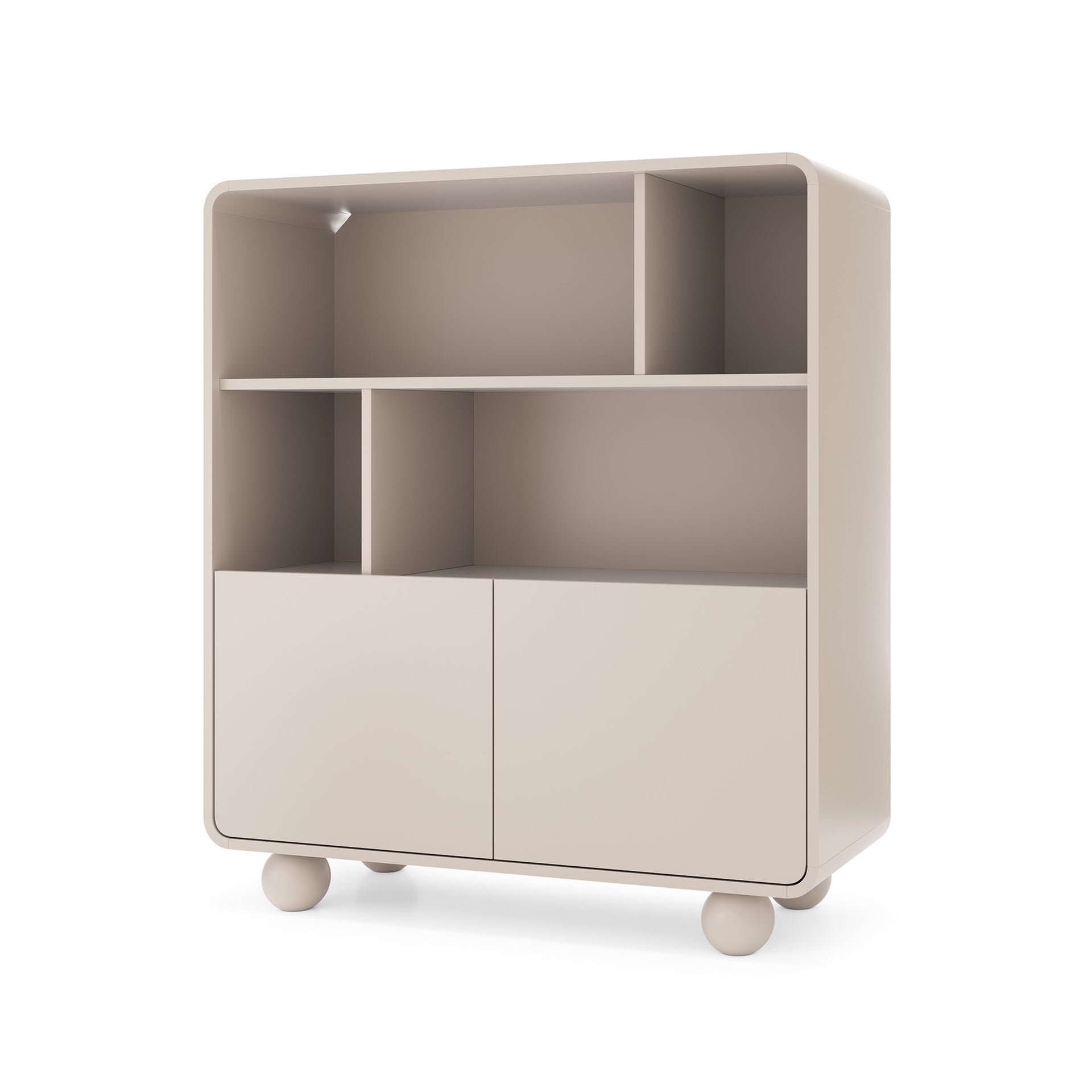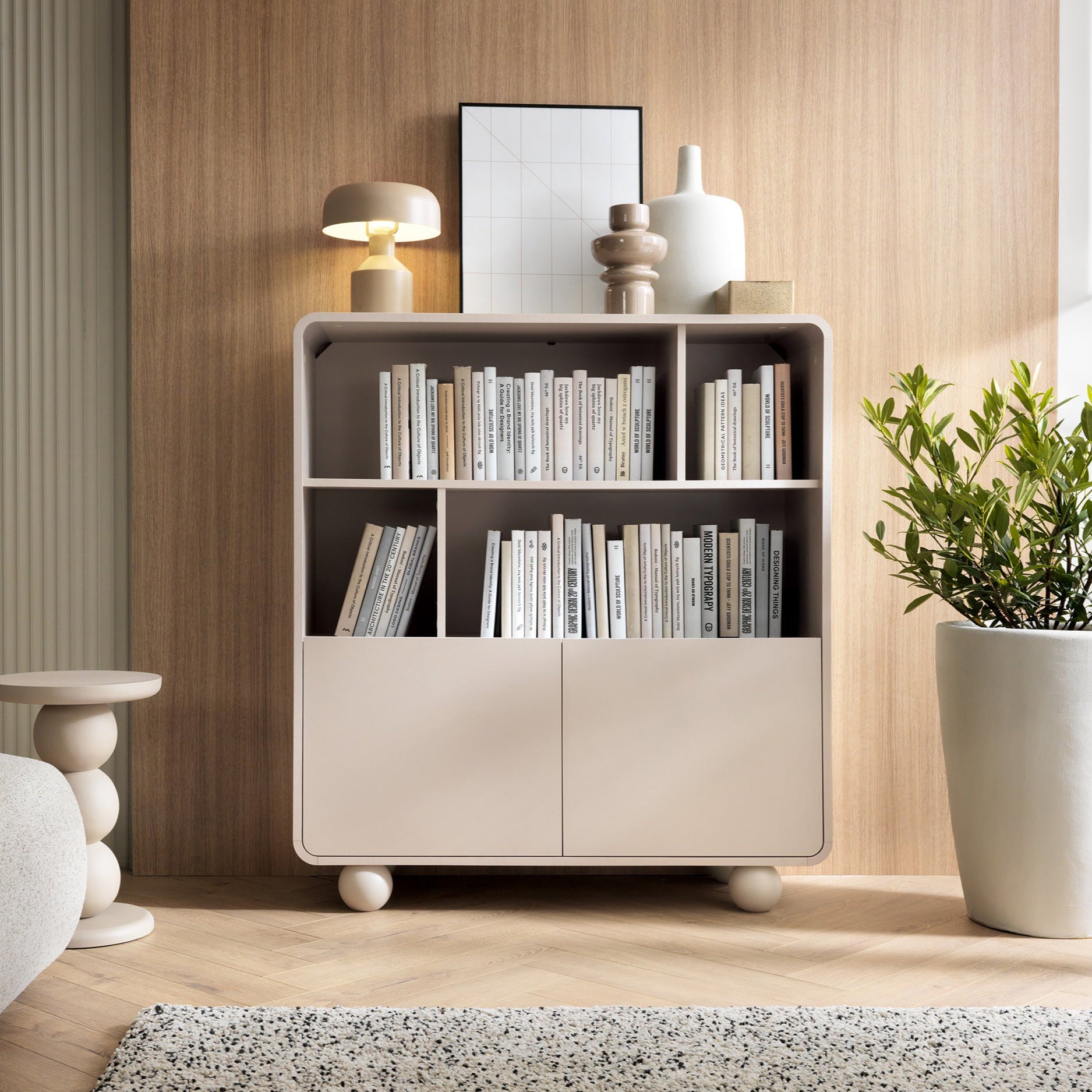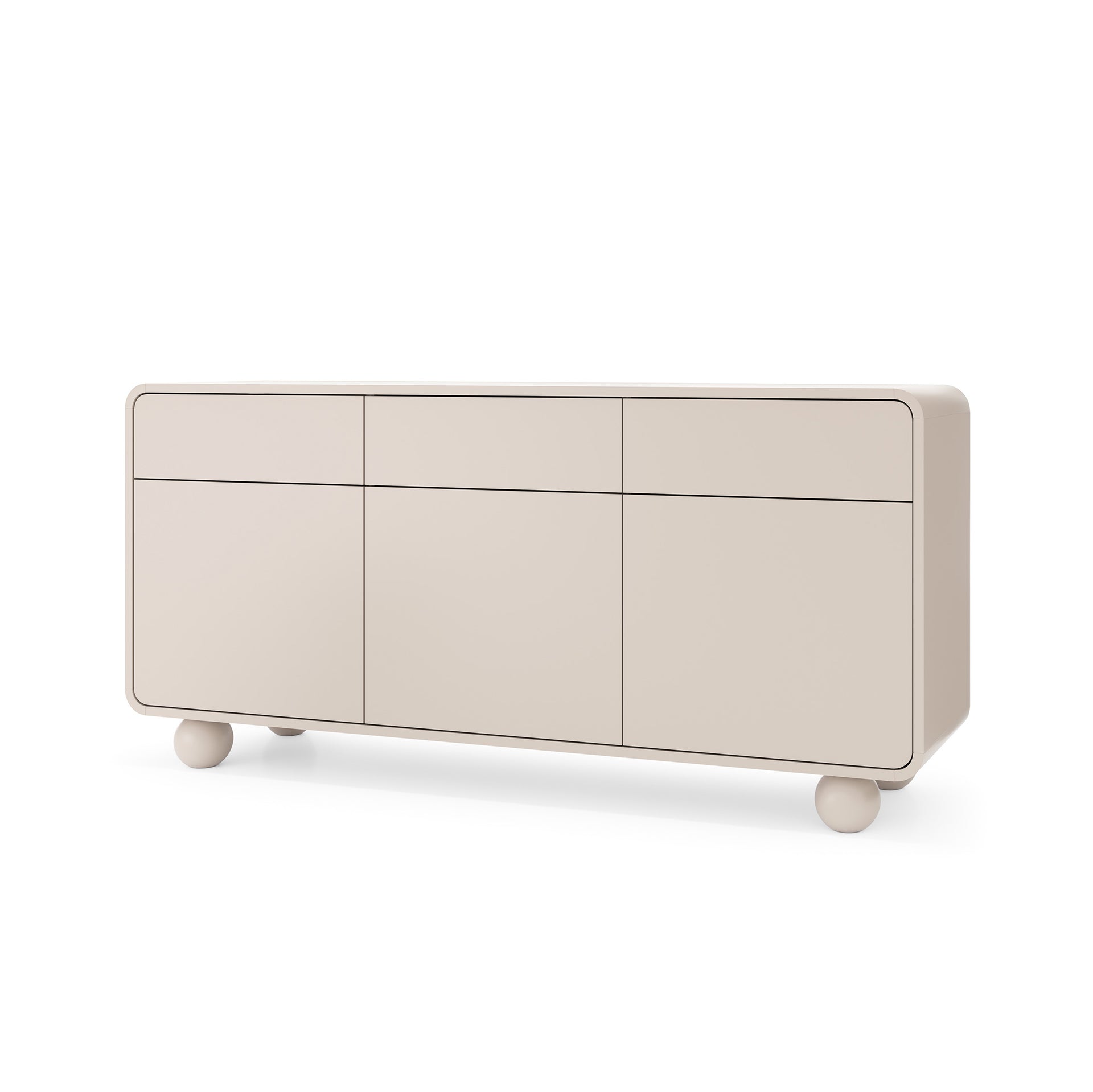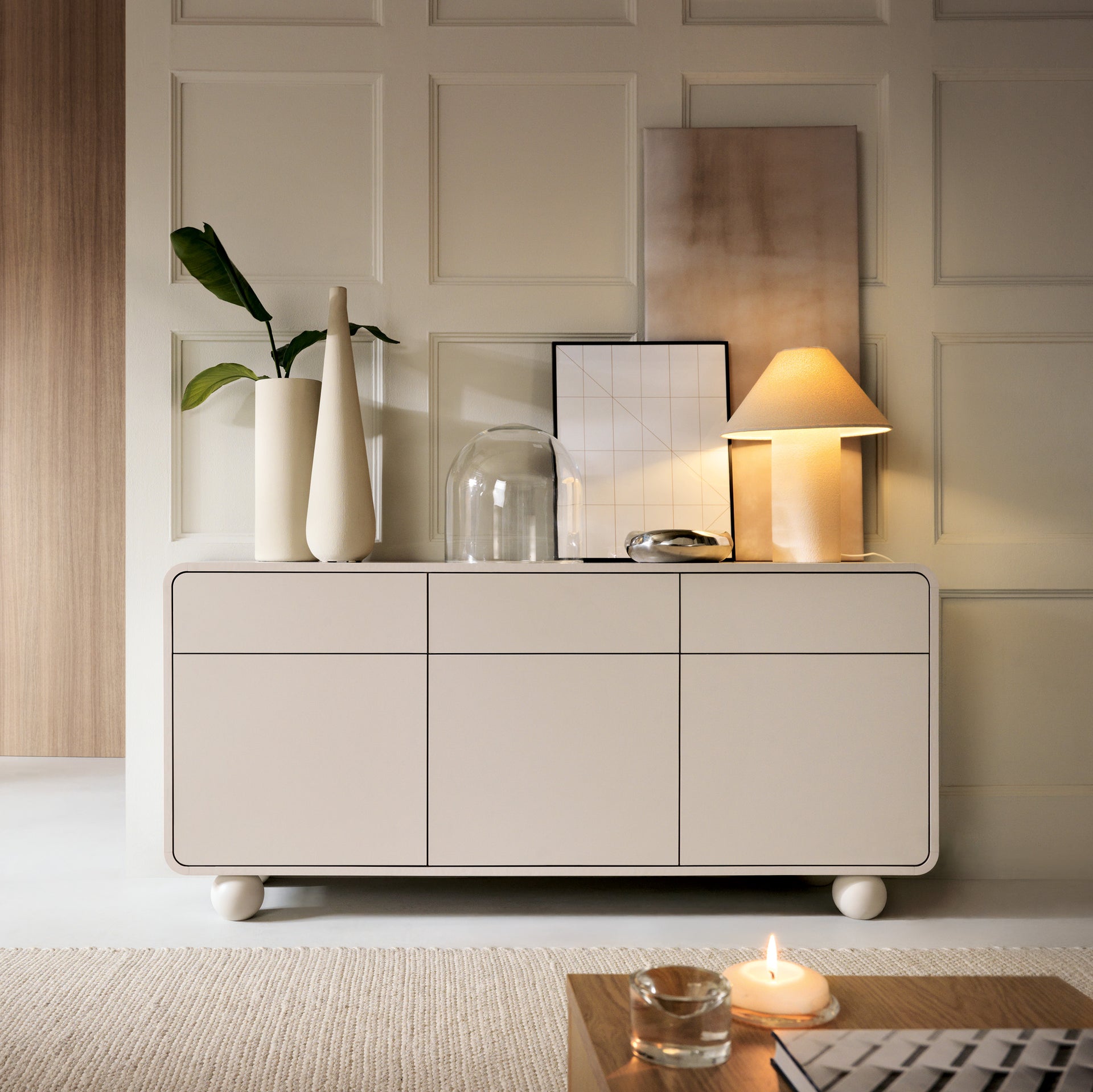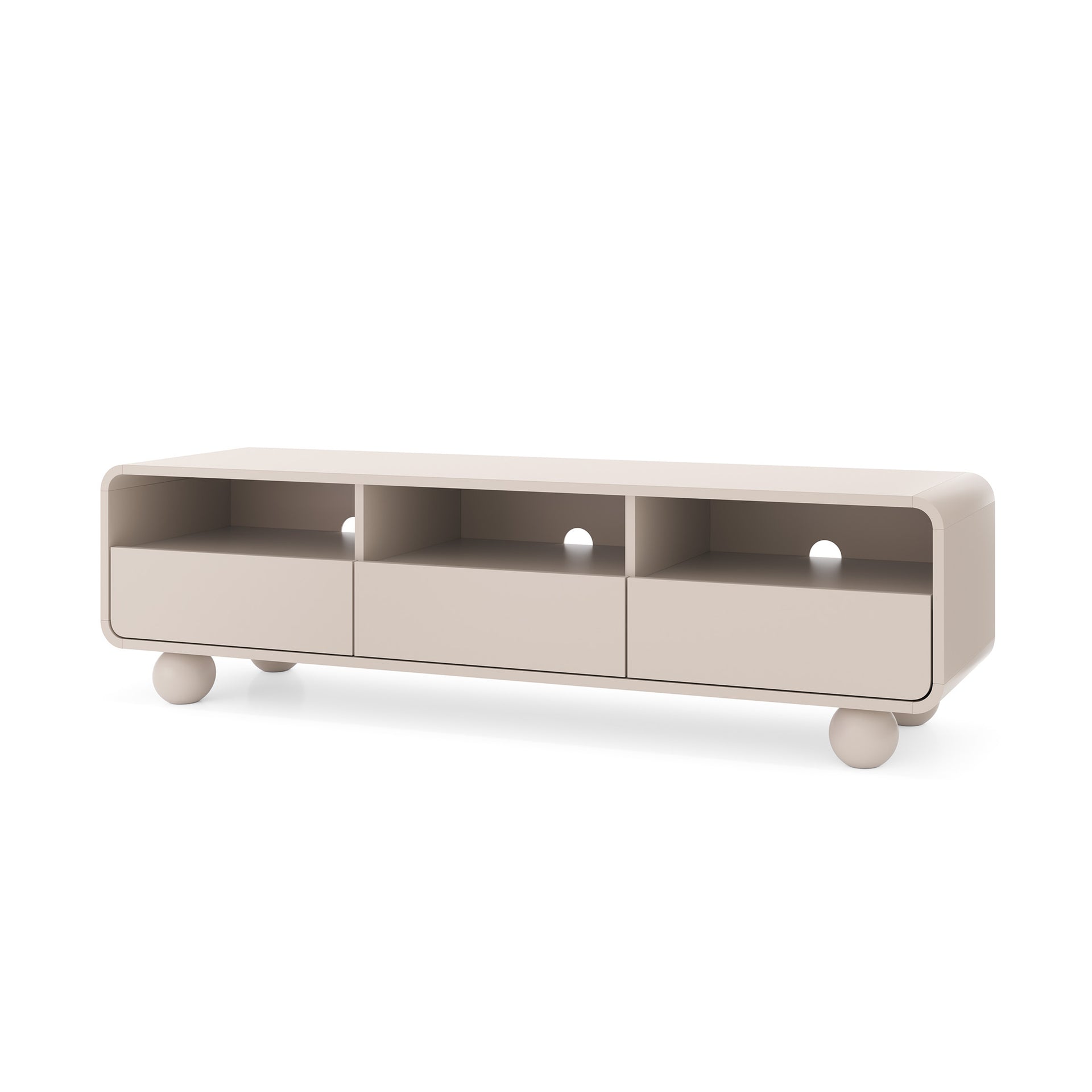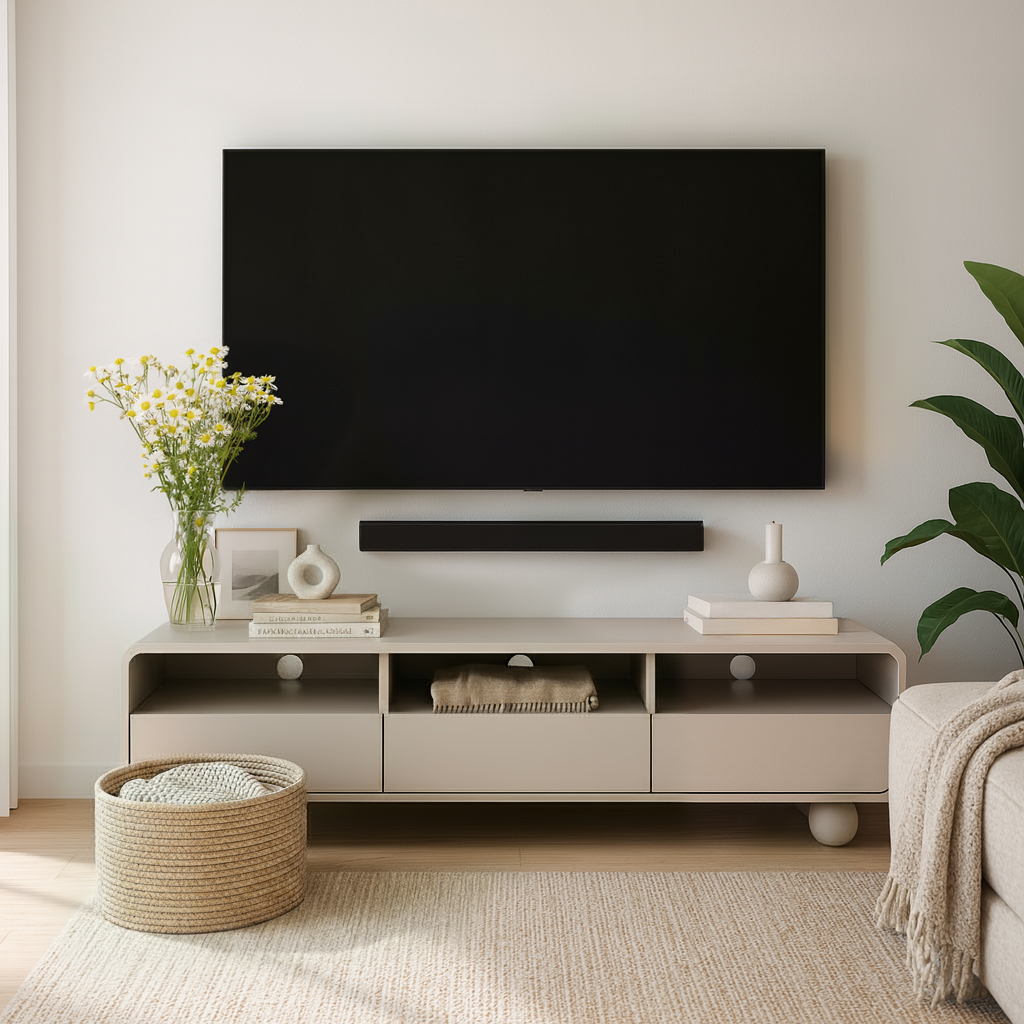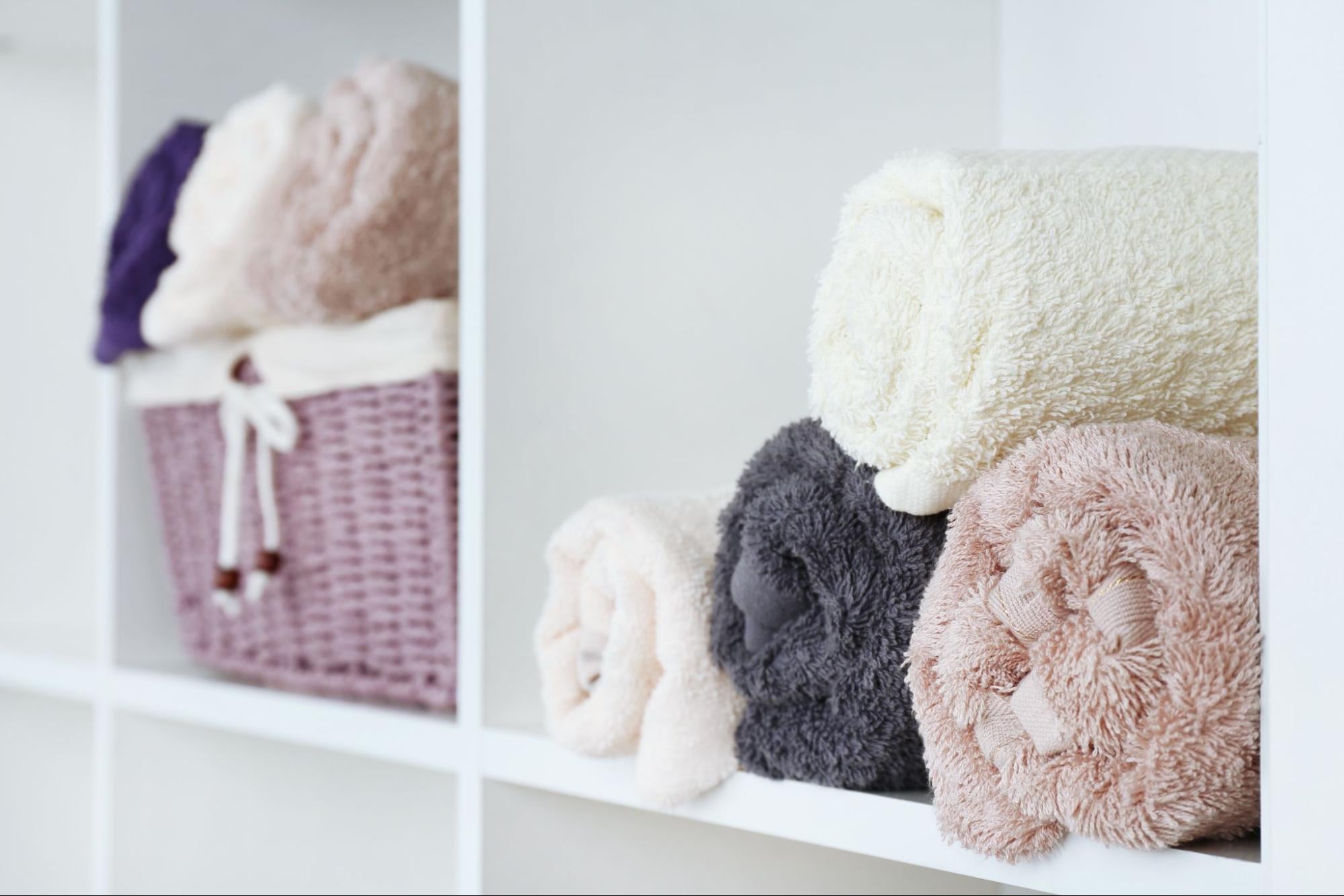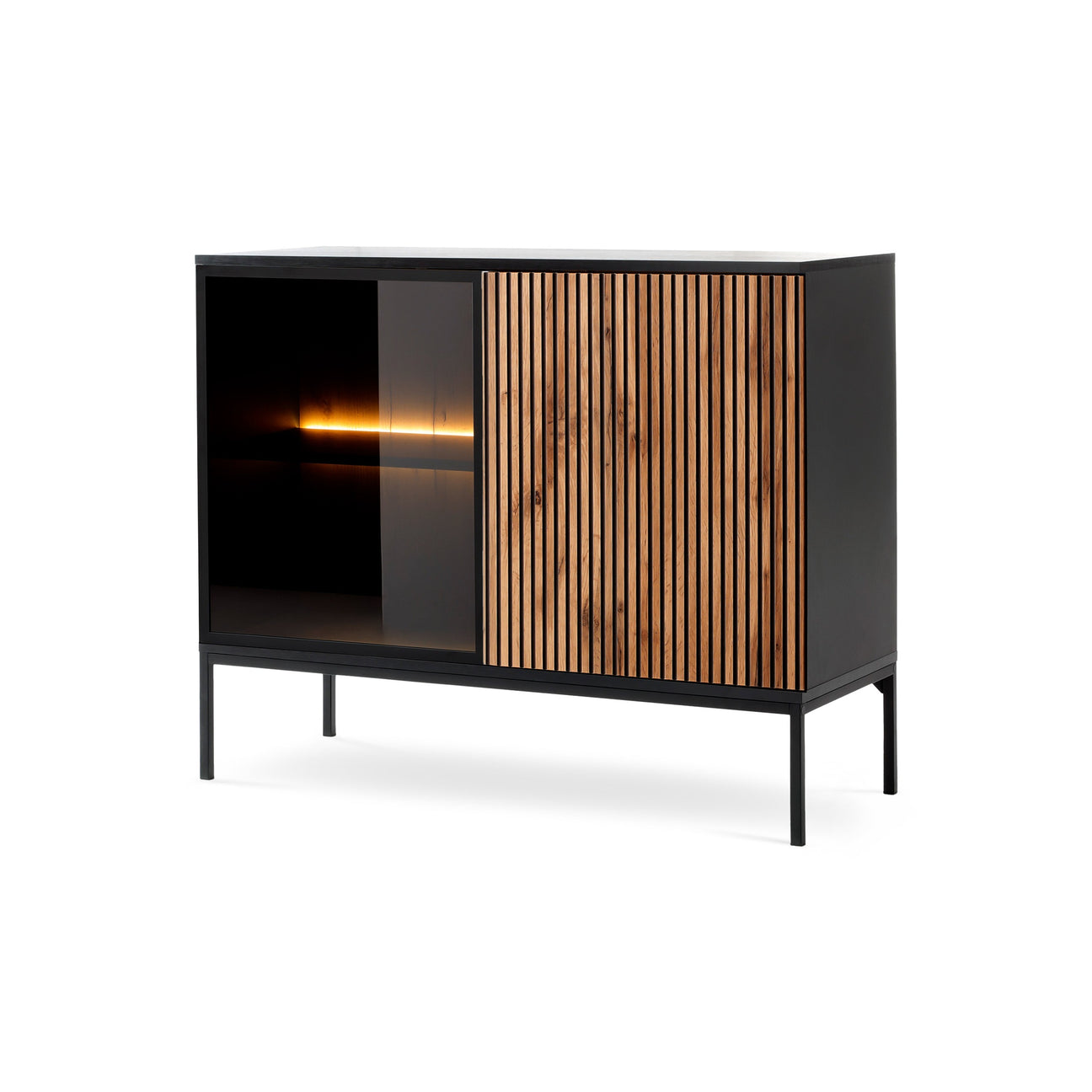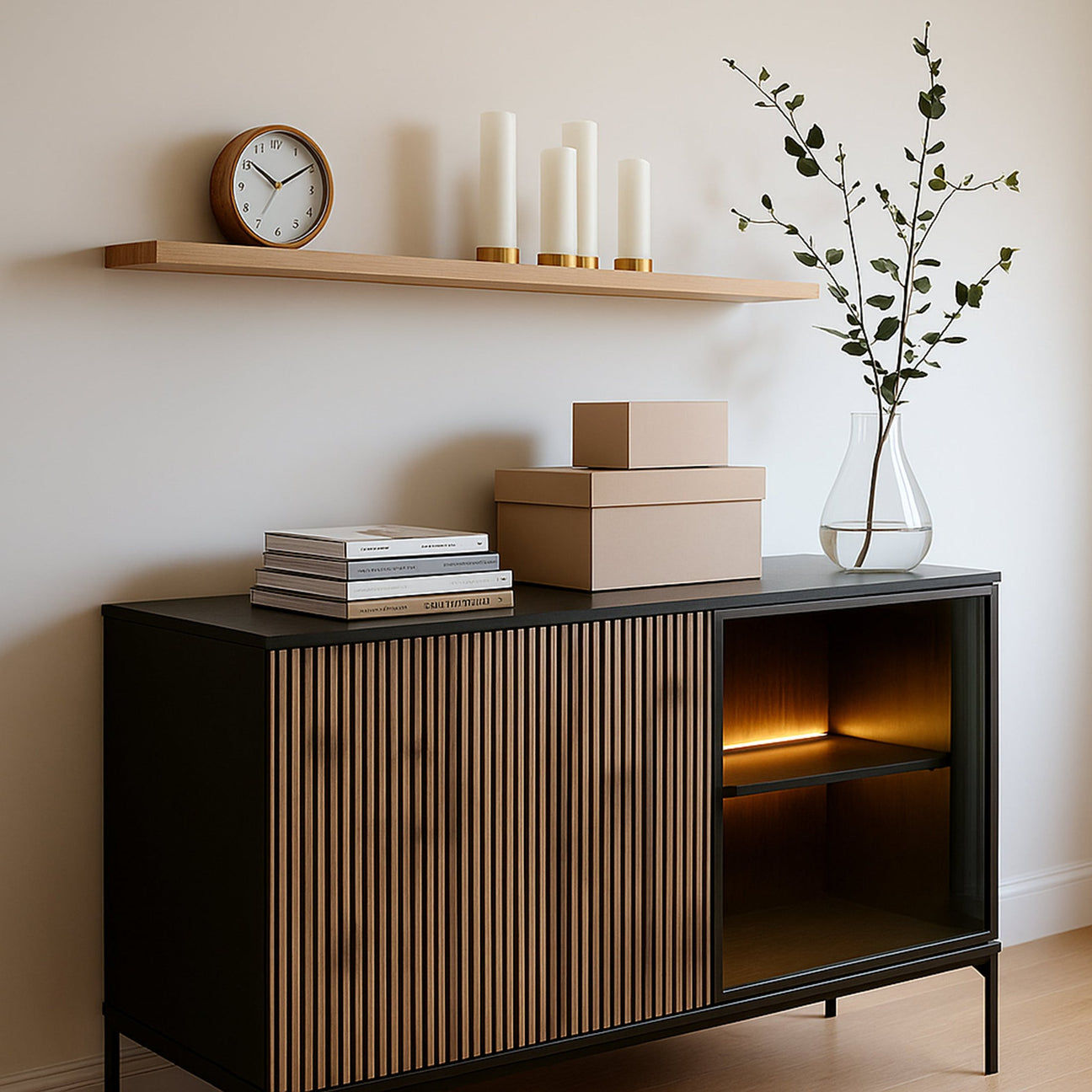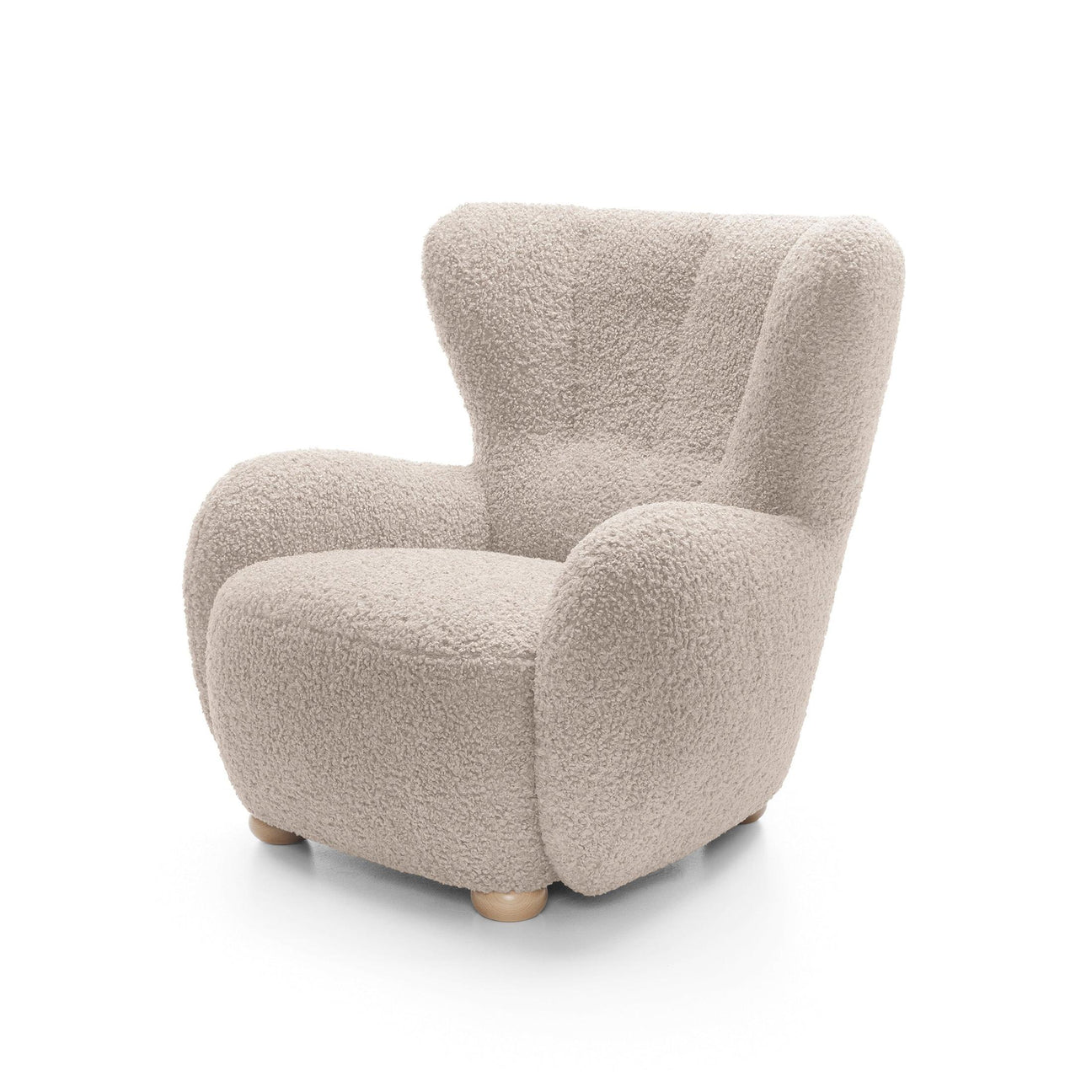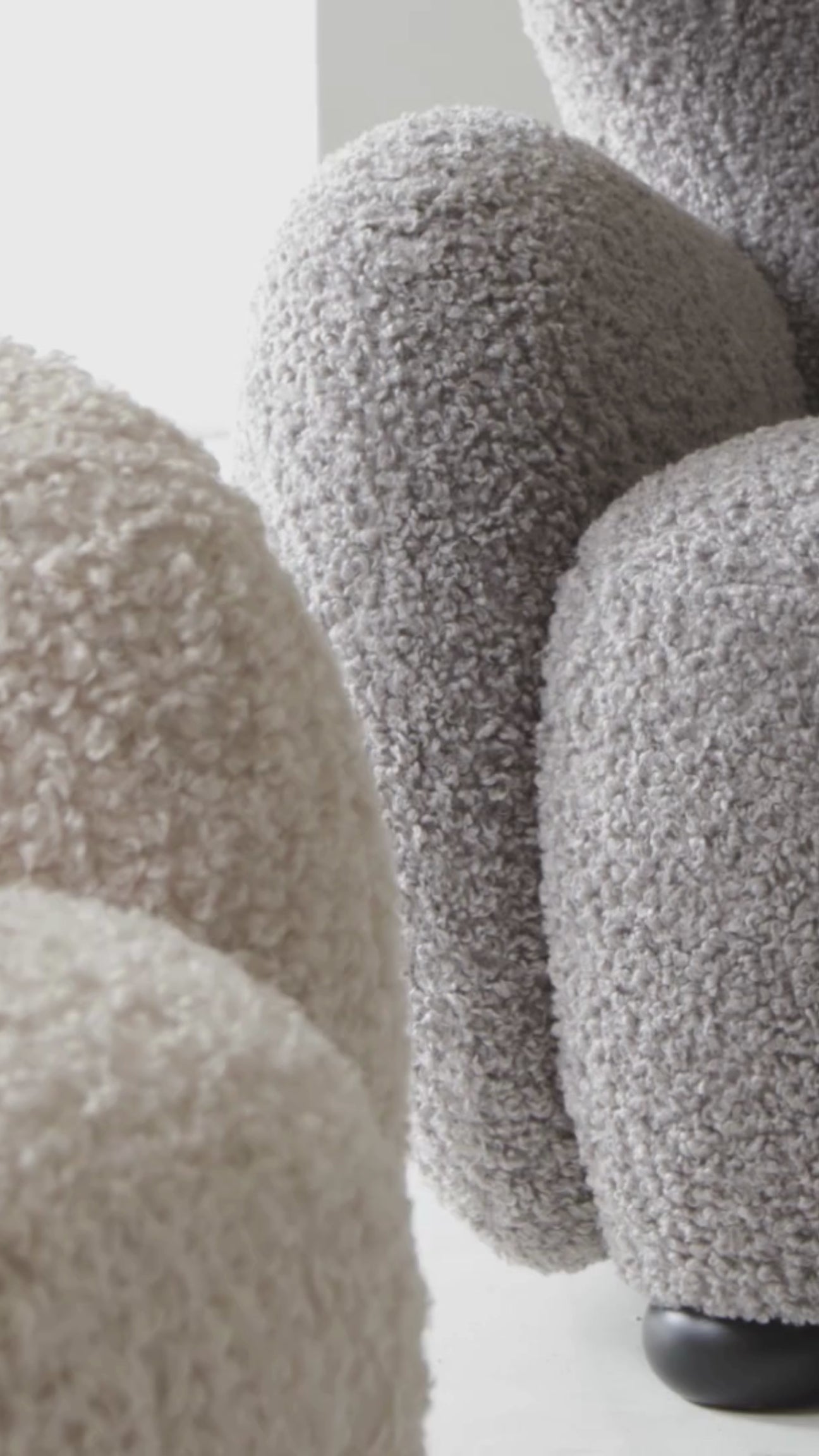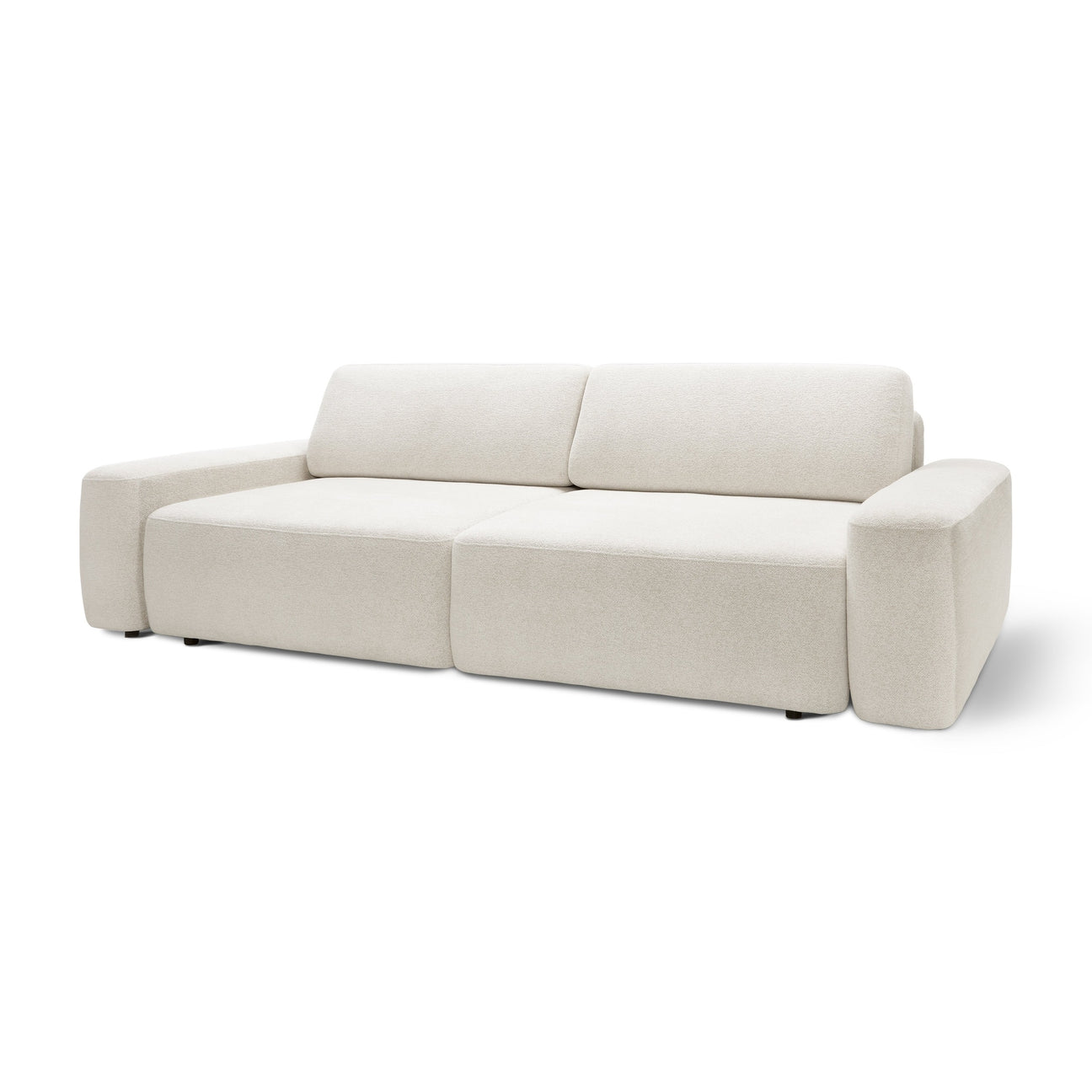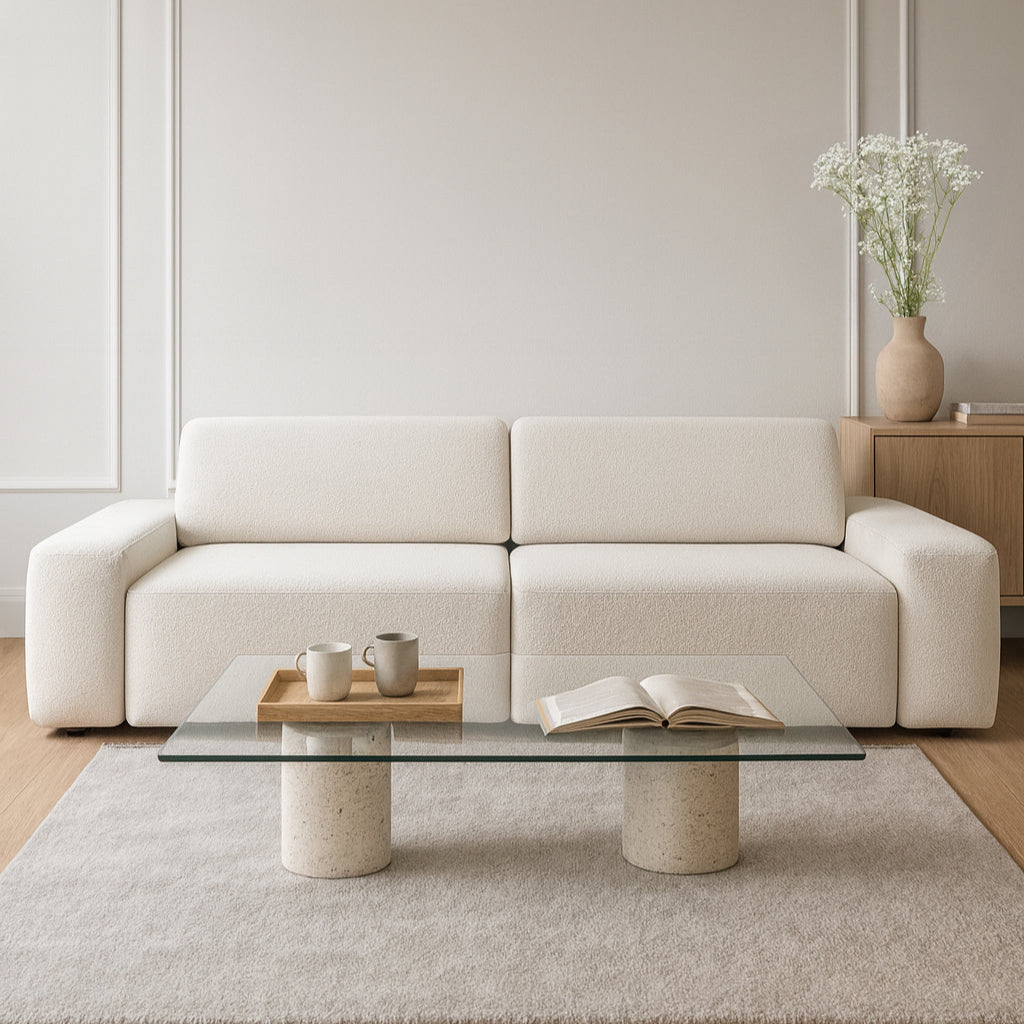Remember those Saturday morning trips to Grandma's closet, looking for winter bedding? She'd open the huge closet and out tumbled neatly folded blankets in colorful patterns, pillows scented with lavender, sheets white as snow, everything arranged in perfect order. Everything had its place, its history, its season. Grandma knew exactly where everything was and never had to look.
You might also remember your mom picking up the sofa cushions in the evenings, folding the blanket after a movie, and putting everything away in the dresser so automatically that it seemed like things knew where they belonged. Or those Sunday cleanups when the whole house suddenly felt bigger, brighter, and cozier—not because something had been added, but because everything had found its place.
Today, when you look at your living room strewn with various throw pillows, blankets draped over the back of the sofa, remote controls tucked between the cushions, and knickknacks scattered across every surface, you wonder: where has Grandma's organizational wisdom gone? Why, in an age of thousands of life-management apps and endless guides to tidiness, do our homes sometimes feel like a battlefield?
Love for the warmth of home It's not just the ability to create beautiful spaces, but also the wisdom of organization, which allows us to enjoy our home instead of struggling with chaos. It's the understanding that order isn't about rigid rules, but a system that serves life, making home a place of rest, not additional stress.
The Evolution of Home Storage: From Trunks to Systems
Every generation has its own philosophy of organizing home spaces—and each tells a story about the times in which they arose. Your grandmother could memorize the contents of every drawer in the house. She had her tried-and-true systems: bedding in a trunk in the attic, clothes in a dresser according to the seasons, holiday dishes on the top shelf of the sideboard. This wasn't a coincidence—it was wisdom born of necessity.
Back then, a home had clearly defined functions, and everything had its fixed place. No one considered "decorative pillow collection" or "seasonal blankets." There was one blanket for winter, perhaps a lighter one for summer, one set of good bedding, and one for everyday use. It sounds restrictive today, but it had its own magic – a simplicity that made organization as natural as breathing.
Your parents were pioneers of home diversity. They were the first to buy pillows not just for sleeping, but "for beauty." It was during their time that blankets appeared, not just for warmth but also for decoration. Along with the first stylistic experiments came the first challenges: where to store these beautiful, but unused, accessories?
Our generation has inherited this diversity and expanded it to the point of absurdity. We have blankets for every mood, pillows for every season, souvenirs from every trip. It's wonderful that we can express ourselves through objects, but sometimes we feel like curators of a museum of things we love but don't know where to keep them.
The Psychology of Clutter: Why We Accumulate Chaos
Before we begin organizing our space, it's important to understand why clutter occurs in the first place. It's not a matter of laziness or lack of character—it's a complex psychological process with profound causes.
Decision fatigue is a real problem of modern times. When we come home after a day full of professional decisions, the last thing we have the energy for is deciding where to put the pillow or where to put the blanket. It's easier to throw it on the nearest surface and deal with it "later."
Emotional attachments to things make it difficult to let go of them, but also difficult to find the right place for them. That pillow from our first apartment together, that blanket from Grandma, those little things from important moments – everything has sentimental value, but not always practical value.
The fear of making the wrong decision is paralyzing. Where should this figurine be placed? Which shelf should I put this photo album on? What if I make a mistake and regret it? Sometimes it's easier to make no decision at all than to risk making a bad one.
The "might come in handy" syndrome causes us to hoard things "just in case," but we don't have a system for organizing them. Those pillows might be useful for a party, that blanket might be needed for a picnic, those little things might one day fit into a new arrangement.
Understanding these mechanisms is the first step to creating a system that will work and not fight against our psyche.

The philosophy of thoughtful storage
A good storage system isn't about rigid rules, but rather a flexible philosophy that adapts to your lifestyle. The personalization is yours, you create it yourself – and that includes how you organize your space.
The principle of accessibility – things you use every day should be the most accessible. The blanket you cover yourself with on the sofa in the evening should be within easy reach. Decorative pillows , which you change seasonally, can be tucked away further away.
The principle of visibility – if it can't be seen, it doesn't exist. Things tucked away in plastic bags at the bottom of the closet will quickly be forgotten. It's better to have fewer things, but ones that are visible and accessible.
The principle of categorization is to keep similar items together. All blankets in one place, all pillows in another, all candles in a third. This makes it easier to both sort and find.
The principle of seasonality – summer items should be available in summer, winter items in winter. But the system must allow for easy rotation between seasons.
The principle of beauty – the storage system itself should be pleasing to the eye. Beautiful boxes, attractive baskets, and aesthetically pleasing solutions make maintaining order a pleasure, not a chore.
Storage systems for different types of homes
Small apartment: maximizing every centimeter
In a studio apartment or small apartment, every inch of storage space is valuable. Multifunctionality and thoughtful use of hidden spaces are key.
Sofas with storage are the perfect solution. The Pillovely sofa collection offers not only seating and sleeping space but also hidden compartments that can hold extra blankets, pillows, or bedding. It's like a magic box – elegant on the outside, practical on the inside.
The space under the bed is often an untapped treasure. Flat boxes or special containers can hold seasonal blankets, extra pillows, and bedding for guests. It's important that they are airtight and easy to slide out.
Height is your ally in small spaces. Shelves right up to the ceiling can accommodate items used only occasionally. Tall wardrobes, ceiling-high shelves – every vertical centimeter saves horizontal space.
Family home: organization for everyone
In a home with children, storage systems must be not only functional but also intuitive for everyone. Children should be able to find and put away items independently.
Color-coding helps even the youngest children know where things belong. Blankets in blue baskets, pillows in pink, and knick-knacks in yellow. A simple system that works without instructions.
Availability at various levels – children's items at their highest level, adults' items at a higher level, and seasonal items at the lowest. Everyone has access to what they need, but not to what they shouldn't touch.
Damage-resistant solutions – with children in the house, the system must survive accidental knocks, spills, and snags. Plastic containers, durable fabrics, and easy-to-clean surfaces.
Singles' house: elegance and functionality
When you live alone, you can afford more sophisticated solutions, but you still have to keep things tidy. The system should be beautiful, but also as simple as possible.
Thoughtful minimalism – it's better to have fewer things, but high-quality and well-organized. Beautiful baskets and boxes harmonize with the natural shapes of the sofas from our collection.
Single-person systems – everything tailored to your needs, your habits, your rhythm of life. You can have a blanket on the sofa because no one will complain about the mess. You can keep books on the coffee table because there's no risk of your child destroying them.
Transitional space: student and first-time apartments
In places where you live temporarily, the storage system must be mobile and easy to move.
Portable solutions – baskets, boxes, and containers that can be easily taken with you when moving. Avoiding built-in systems in favor of flexible solutions.
Universal containers – ones that will work well in any new space, regardless of its layout or size.

Categories of things and their special needs
Blankets: from everyday to festive
Blankets are one of the most difficult categories to store because they are large, often irregular in shape, and everyone has different accessibility needs.
Hierarchy of accessibility : Everyday blankets should have their permanent home on the sofa or in a nearby basket. Seasonal blankets can be folded in drawers or on shelves. Holiday or occasional blankets should be stored deep in the closet.
Folding methods : traditional folding in half can cause fabric to crease. Rolling is better, as it preserves the fabric's structure and allows for compact storage.
Moth protection : Natural fiber blankets require special protection. Vacuum bags, moth repellents, and regular airing.
Seasonal rotation : The system should allow for easy replacement of summer blankets with winter ones. Labeled containers, clear division, and a rotation calendar.
Pillows: decorative vs. functional
Decorative pillows are a real organizational challenge – they come in different sizes, shapes, and colors, and their use often depends on the mood, season, or occasion.
Everyday pillows should have their permanent home on the sofa or bed. A well-chosen sofa can be a beautiful background for carefully selected pillows that will emphasize its character.
Seasonal pillows can be stored in boxes or baskets, separated by color or season. Spring pillows in one container, summer pillows in another, and autumn pillows in a third.
Occasional pillows – the most expensive, most delicate or least used ones can be protected in individual covers or boxes.
Little Things: Little Heroes of the Big Chaos
Small things are the true test of any organization system. Candles, photo frames, figurines, books, magazines, remote controls, chargers – a thousand little things that can make a home cozy or chaotic.
The one-place rule – every little thing should have its own specific place. Remote controls have their basket, candles have their shelf, frames have their shelf.
Trays and trays as space organizers – on a coffee table, a dresser, or a windowsill. They limit the space for small items and keep them organized.
Drawer systems with compartments allow you to categorize even the smallest items. One compartment is for batteries, another for chargers, and a third for keys.
Household rules – every item should have a home, a place to which it always returns. Not a closet, but a home.

Seasonal Rotation: The Art of Change
One of Grandma's greatest secrets to tidying up was seasonal rotation. Winter items were on display in the winter, summer items tucked away. In spring, a major cleanup and swapping places was essential. This isn't just practical, but also psychologically significant—it provides a sense of freshness, change, and renewal.
A rotation plan – ideally tied to seasonal changes or major holidays. It doesn't have to be rigid, but it should be regular.
Labeling system – boxes, baskets, or bags with clear labels. "Winter 2024," "Summer," "Holidays," "Guests." After a year, you know exactly where to look.
An opportunity for review – every rotation is a moment for evaluation: has this item been used? Do I still like it? Does it still fit my lifestyle?
System flexibility – the weather can be unpredictable. The system should allow you to quickly pull out a warm blanket on a cool July evening.
Creative Solutions: When Standards Are Not Enough
Sometimes traditional storage methods don't work for our unique space or lifestyle. That's when it's time to get creative.
Unobvious places : the space under the stairs, the high space above the door, the space behind the sofa that's tucked away from the wall. Every home has its hidden spatial treasures.
Multifunctional furniture : a pouffe that serves as both a seat and storage space, a table with drawers, and a bed with storage space. The Cordia sofa is a perfect example of this approach – an elegant piece of furniture that conceals practical solutions.
Decorative storage : baskets that are part of the arrangement, boxes that look like works of art, systems that are beautiful in their own right.
Mobile systems : shelves on wheels, baskets with handles, containers that can be easily moved from one place to another depending on your needs.

The psychology of maintaining order
Creating a system is half the battle. The other half is maintaining it. And here, the psychology of habit and motivation is key.
The rule of thumb – it's better to clean a little every day than to do a major cleanup once a month. Five minutes in the evening to put things away is less stressful than hours of weekend cleaning.
Positive associations – cleaning should be enjoyable. Favorite music, pretty containers, the satisfaction of a beautifully organized space. Loving the warmth of home also means loving the processes that create that warmth.
System flexibility – if the system is too rigid, it will be sabotaged. It must allow for temporary deviations, for weaker days, for periods of greater chaos.
Reward yourself for keeping things tidy. It could be the pleasure of a beautiful space, maybe extra time to relax, or maybe a small reward for five days of perfect tidiness.
Mistakes worth avoiding
Perfectionism is the biggest enemy of a good organization system. You don't have to have things perfectly organized by color, size, and alphabet. You have to have a system that works for you.
Buying organizers without a plan – first understand your needs, then buy solutions. Not the other way around.
Ignoring household habits – if your partner always throws their keys on the table by the door, don't fight it. Put a nice tray there for keys.
Storing things that aren't being used – if a blanket has been sitting in the closet untouched for a year, it might be time to say goodbye to it.
Too many categories – five large categories are better than twenty small ones. The more divisions, the greater the chance of error.

A place where order serves life
The truth is, the best organization system is the one you actually live with every day . Not the one in the pretty pictures in magazines, not the one you admired at a friend's, but the one that fits your rhythm, your habits, your way of life.
Loving the warmth of home has little to do with perfectly organized drawers or color-coded containers. Instead, it has everything to do with not spending half an hour searching around the house for a blanket when you want to snuggle up with a TV show. It has to do with being able to quickly prepare a comfortable space for them when guests arrive. It has to do with your home bringing you joy, not added stress.
There's no single best way to organize your home. Maybe you're someone who likes to have everything tucked away and out of sight—perfect! Maybe you prefer open shelves where you can see your treasures—also great! Maybe you're a minimalist with three things on a coffee table, or maybe you're a collector surrounded by beloved trinkets. All of these methods can work if they're thoughtful and true to who you are.
The most important thing to remember: you live in a home, not a store . All these things—blankets, pillows, pictures, candles—are there to serve your life, your needs, your happiness. A home isn't a display case of perfectly organized objects, but the place where your real life unfolds. And that life should dictate how you organize, not the other way around.
Pillovely – where everything has its place, every place has its story, and order means not perfection, but thoughtful care for the space that serves your happiness.
See also:


